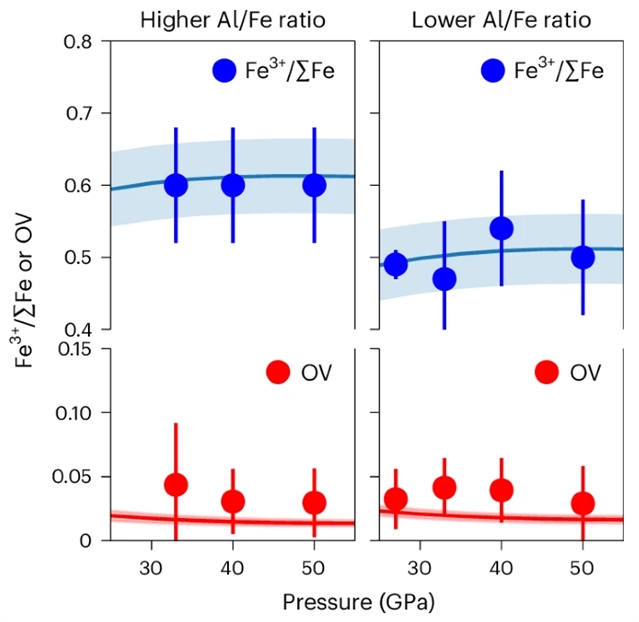
近日,德国拜罗伊特大学Fei Wang团队揭示菱铁矿的铁含量决定了地球的氧化态。相关论文于2025年6月23日发表在《自然—地球科学》杂志上。
Bridgmanite是一种富含镁的硅酸盐钙钛矿,是地球下地幔中最常见的矿物,即使与铁金属平衡,也含有大量的铁(氧化)。来自下地幔的富氧物质的混合可能使上地幔的氧化态在岩芯形成过程中经历了更多的还原条件后提高到目前的水平。然而,目前尚不清楚下地幔氧含量是如何达到这一水平的。
研究组使用已知氧逸度下的高压和温度多砧实验表明,桥锰矿中铁含量与压力无关,但随着温度的升高而降低。利用这些数据,他们建立了一个热力学模型来计算下地幔的铁含量,因为桥锰矿是从地球早期的还原岩浆海洋中结晶出来的。研究组确定,这种铁含量足以解释整个地幔混合后当前上地幔的铁含量。
附:英文原文
Title: Bridgmanite’s ferric iron content determined Earth’s oxidation state
Author: Wang, Fei, Wang, Lin, Fei, Hongzhan, Miyajima, Nobuyoshi, McCammon, Catherine, Frost, Daniel J., Katsura, Tomoo
Issue&Volume: 2025-06-23
Abstract: Bridgmanite, a magnesium-rich silicate perovskite, is the most prevalent mineral in Earth’s lower mantle and contains substantial quantities of ferric (oxidized) iron, even in equilibrium with iron metal. Mixing of oxygen-rich material from the lower mantle could have raised the oxidation state of the upper mantle to its present level after the more reducing conditions during core formation. However, it remains unclear how the lower-mantle oxygen content was established to achieve this level. Here we use high-pressure and temperature multi-anvil experiments at known oxygen fugacities to show that the bridgmanite ferric iron content is independent of pressure but decreases with temperature. Using these data, we build a thermodynamic model to calculate the ferric iron content of the lower mantle as bridgmanite crystallized from a reduced magma ocean in the early Earth. We determine that this ferric iron content would have been sufficient to explain the current upper mantle’s ferric iron content after whole mantle mixing.
DOI: 10.1038/s41561-025-01725-0
Source: https://www.nature.com/articles/s41561-025-01725-0
